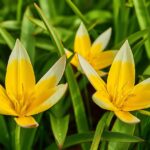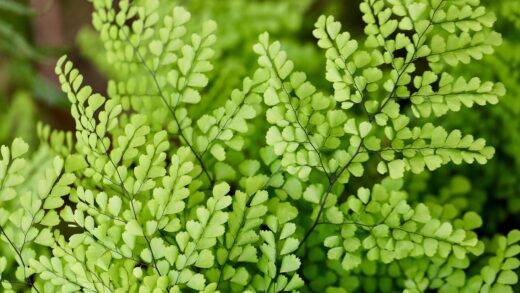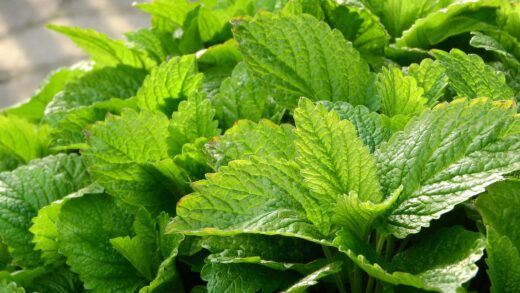The care of the regal pelargonium

Regal pelargoniums, often referred to as Martha Washington geraniums, represent the pinnacle of elegance within the Pelargonium genus, boasting incredibly showy, ruffled flowers in a vast array of vibrant colours and intricate patterns. Unlike their more common zonal or ivy-leafed cousins, these plants have a more refined and somewhat demanding nature, requiring a specific set of conditions to truly thrive and produce their spectacular blooms. Understanding their unique character is the first step toward successful cultivation, as their care regimen is intrinsically linked to their natural growth cycle, which includes a necessary cool period to initiate flower bud formation. This fundamental difference sets them apart and means that gardeners cannot simply apply the same care techniques used for other types of geraniums; instead, a more tailored approach focusing on temperature, light, and seasonal changes is paramount for achieving a breathtaking floral display.
These plants are not just beautiful; they are a rewarding challenge for the dedicated gardener, offering a display of flowers that few other container plants can match. Their large, often bi-coloured blossoms appear in clusters and can completely cover the plant during its peak blooming season in the spring and early summer. However, achieving this profusion of flowers requires a diligent approach to care throughout the entire year, not just during the growing season. The journey to a stunning regal pelargonium begins with acknowledging its distinct preferences and committing to providing the environment it needs to flourish, from the composition of its soil to the precise timing of its rest period. Success with these plants brings a great sense of accomplishment and a truly remarkable visual reward for your efforts.
The key to unlocking the full potential of a regal pelargonium lies in mimicking its native climate, which is characterized by cool, moist winters and warm, dry summers. This translates into a horticultural practice that emphasizes providing cooler temperatures, especially at night, to stimulate the development of flower buds. Without this chilling period, the plant may produce lush green foliage but will stubbornly refuse to bloom, a common source of frustration for unwitting growers. Therefore, the gardener’s calendar for these plants is dictated by the seasons, with specific tasks and adjustments in care required for spring, summer, autumn, and winter to guide the plant through its natural cycle of growth, flowering, and dormancy.
Ultimately, the successful cultivation of regal pelargoniums is a holistic process where every aspect of care is interconnected. The right balance of bright, indirect light fuels the plant’s energy production, while a precise watering and feeding schedule provides the necessary hydration and nutrients without overwhelming the root system. Proper pruning shapes the plant and encourages future blooms, and a well-managed overwintering period ensures the plant is rested and ready for the next season’s performance. By mastering these core pillars of care, any gardener can cultivate a healthy, robust, and floriferous regal pelargonium that will be the envy of the neighbourhood.
Optimal growing conditions for vibrant blooms
The foundation of a spectacular floral display is providing the perfect growing environment, and for the regal pelargonium, this starts with light. These plants crave bright, indirect sunlight for at least six hours a day to photosynthesize effectively and produce the energy needed for their large, numerous flowers. An ideal location would be near an east-facing window where the plant can receive gentle morning sun, or in a spot that gets filtered sunlight for most of the day. Unlike other geraniums that can tolerate full sun, the regal variety is more sensitive, and harsh, direct afternoon sun can scorch its leaves and cause the delicate flowers to fade prematurely, so protection during the hottest part of the day is crucial.
More articles on this topic
Temperature is another critical factor in the life of a regal pelargonium and is directly linked to its ability to flower. These plants have a distinct preference for cooler conditions compared to their heat-loving relatives. They perform best in daytime temperatures between 18-24°C (65-75°F) and, most importantly, require cooler nighttime temperatures of around 10-15°C (50-60°F) in the late winter and early spring to set their flower buds. This cool period is non-negotiable for a successful bloom. Once buds have formed, they will tolerate slightly warmer conditions, but they generally cease flowering and may enter a state of dormancy if temperatures consistently rise above 27°C (80°F).
Good air circulation is essential for preventing the fungal diseases to which regal pelargoniums can be susceptible, such as botrytis (grey mould). Stagnant, humid air creates a perfect breeding ground for these pathogens, so ensuring there is gentle air movement around the plant is vital, especially when grown indoors. This can be achieved by not overcrowding plants and, if necessary, using a small fan on a low setting in the room. However, avoid placing them in the direct path of cold drafts from windows or hot, dry air from heating vents, as this can cause stress and damage to the foliage.
Whether you choose to grow your regal pelargonium indoors as a houseplant or outdoors in a container, selecting the right location is key. If grown outdoors, a sheltered patio or balcony that is protected from strong winds and the intense midday sun is ideal. They can be brought outdoors after the last frost in spring and should be brought back inside before the first frost of autumn. For indoor cultivation, a bright, cool room that is free from drafts provides the perfect sanctuary. The ability to control their environment more closely indoors often makes it easier to provide the specific cool temperatures required to initiate flowering.
Soil composition and potting
The quality of the soil is paramount for the health of a regal pelargonium, as its root system is sensitive to being overly wet. The ideal potting medium must be exceptionally well-draining to prevent waterlogging and the subsequent risk of root rot. A high-quality, peat-based commercial potting mix designed for flowering houseplants is a good starting point. This mix should be light and airy, allowing both water and oxygen to move freely through the root zone. Avoid using heavy garden soil, which compacts easily and retains too much moisture, creating an anaerobic environment that can quickly prove fatal to the plant.
More articles on this topic
To further enhance the drainage and aeration of a commercial potting mix, it is highly beneficial to incorporate amendments. Adding materials such as perlite, vermiculite, or coarse horticultural sand at a ratio of about one part amendment to three parts potting mix can significantly improve the soil structure. Perlite is a lightweight volcanic glass that creates air pockets in the soil, while vermiculite helps retain a small amount of moisture and nutrients without becoming waterlogged. This custom blend ensures that excess water drains away quickly while still holding enough moisture to keep the roots hydrated between waterings.
The choice of container also plays a crucial role in managing soil moisture and promoting a healthy root system. A pot made from a porous material like terracotta is often an excellent choice, as it allows moisture and air to pass through its walls, helping the soil to dry out more evenly. Regardless of the material, it is absolutely essential that the container has at least one large drainage hole at the bottom. The size of the pot should be appropriate for the plant’s root ball; a pot that is too large will hold excess soil that stays wet for too long, increasing the risk of root rot. It is better to have the plant slightly root-bound than to over-pot it.
Repotting should be done when the plant becomes significantly root-bound, which is typically every one to two years. The best time to repot a regal pelargonium is in the late summer or early autumn, after it has finished its main flowering cycle. When repotting, choose a new container that is only one size larger, about 2-4 cm (1-1.5 inches) wider in diameter than the previous one. Gently remove the plant, inspect the roots for any signs of disease, and place it in the new pot with fresh, well-draining soil. This refreshes the growing medium and gives the roots more space to develop before the next growing season.
The art of watering
Watering is perhaps the most critical aspect of regal pelargonium care, as they are notoriously intolerant of “wet feet.” The guiding principle is to water thoroughly but infrequently, allowing the soil to dry out significantly between each watering session. This approach mimics the conditions of their native habitat and is crucial for preventing root rot, the most common cause of failure with these plants. You should never let the pot sit in a saucer of standing water, as this will quickly lead to a waterlogged, oxygen-deprived root system. Always empty any excess water from the saucer about 30 minutes after watering.
The most reliable way to determine if your plant needs water is to check the soil moisture manually. Instead of adhering to a strict schedule, insert your finger into the potting mix to a depth of about 2-3 cm (1 inch). If the soil feels dry at this depth, it is time to water. If you feel any moisture, it is best to wait another day or two and check again. The weight of the pot can also be a good indicator; a pot with dry soil will feel noticeably lighter than one with moist soil. Learning to judge by feel and weight is a far more effective method than watering on a fixed calendar, which doesn’t account for changes in temperature, humidity, or the plant’s growth rate.
Observing your plant will provide clear signals about its watering needs. The signs of underwatering include wilting leaves and flowers, and the lower leaves may turn yellow and drop off. Conversely, and more dangerously, overwatering also causes leaves to turn yellow and drop, but they will often feel mushy rather than dry. Other signs of overwatering include soft, brown stems at the base of the plant and a generally unhealthy, wilting appearance even when the soil is wet. It is always better to err on the side of being too dry rather than too wet, as a plant can usually recover from a slight wilt, but root rot is often irreversible.
Watering frequency must be adjusted dynamically with the changing seasons and the plant’s life cycle. During the active growing and flowering period in spring and early summer, the plant will use more water and will need to be watered more often. As temperatures rise in the summer, you may need to monitor the soil more closely. In the autumn, as growth slows down, you should begin to reduce the frequency of watering. During the cool winter dormancy period, the plant requires very little water, only needing a small amount every few weeks to prevent the roots from completely desiccating.
Feeding for spectacular flowers
Proper nutrition is the fuel that powers the magnificent floral display of a regal pelargonium. To produce their large, vibrant blooms, these plants require a consistent supply of nutrients throughout their active growing season. A balanced feeding program is therefore essential, but it must be applied judiciously, as over-fertilization can be just as harmful as under-fertilization. The goal is to provide a steady stream of the necessary elements to support both healthy foliage and prolific flowering without causing nutrient burn or encouraging excessive leafy growth at the expense of blossoms.
When selecting a fertilizer, it is best to choose one formulated for flowering plants, such as African violets or tomatoes, which typically has a lower nitrogen content and a higher percentage of phosphorus and, most importantly, potassium. The N-P-K ratio, representing Nitrogen-Phosphorus-Potassium, should be carefully considered. A fertilizer with a higher ‘K’ value (potassium) is particularly beneficial for regal pelargoniums, as potassium plays a vital role in flower development, colour intensity, and overall plant vigor. Avoid high-nitrogen fertilizers, as these will promote lush, soft foliage growth, often to the detriment of flower production.
The frequency of feeding should be aligned with the plant’s growth cycle. Begin fertilizing in the early spring as new growth starts to appear, and continue on a regular basis through the peak blooming period into early summer. A common and effective practice is to use a water-soluble liquid fertilizer at half the recommended strength with every other watering, perhaps every two to three weeks. This method of “weakly, weekly” (or bi-weekly) provides a more constant and easily absorbed supply of nutrients compared to infrequent, full-strength applications, reducing the risk of shocking the plant’s root system.
It is crucial to cease fertilization as the plant’s growth naturally slows in the late summer and early autumn. Continuing to feed the plant at this time can disrupt its preparation for dormancy and may encourage weak, late-season growth that is susceptible to disease. The plant should not be fed at all during its winter rest period. Always apply fertilizer to moist soil, never to dry soil, as this can severely burn the roots. Watering the plant with plain water first and then applying the diluted fertilizer solution is the safest practice.
Pruning and deadheading for continuous beauty
Pruning is a vital horticultural practice that helps to maintain the shape, health, and productivity of a regal pelargonium. The primary purpose of pruning this particular species is to encourage a compact, bushy habit and to stimulate the growth of new shoots, as the plant flowers on wood produced in the previous season. Without regular pruning, the plant can become tall, woody, and “leggy,” with sparse foliage and fewer flowers concentrated only at the tips of the stems. A well-pruned plant is not only more aesthetically pleasing but is also healthier, as the more open structure improves air circulation, which helps to deter fungal diseases.
A simple yet highly effective task that should be performed throughout the blooming season is deadheading. This involves the regular removal of spent flower clusters as soon as they begin to fade. To deadhead properly, follow the flower stalk back to the main stem from which it grew and snap it off or cut it cleanly. This process prevents the plant from expending its energy on producing seeds and instead redirects that energy into developing new flower buds. Consistent deadheading will significantly extend the blooming period and keep the plant looking tidy and attractive.
The most important, structural pruning should be done at a specific time of year to avoid sacrificing flowers. The best time for a major prune is in the late summer or early autumn, immediately after the plant has finished its primary flowering cycle. At this point, you can cut back all the main stems by about one-third to one-half their length. This “hard prune” may seem drastic, but it is essential for rejuvenating the plant and encouraging the growth of strong new stems that will carry the following year’s blooms. Pruning in the spring is a mistake, as you would be cutting off the very stems that have developed flower buds over the winter.
The technique used for pruning is straightforward but requires care. Always use clean, sharp pruning shears or secateurs to make clean cuts that will heal quickly. Make your cuts just above a leaf node, which is a small bump on the stem where a leaf is or was attached. A new branch will typically grow from this node. While pruning, also take the opportunity to remove any dead, damaged, or weak-looking stems, as well as any branches that are crossing or rubbing against each other. This thinning process helps to open up the center of the plant, further improving light penetration and air movement.
Seasonal care adjustments
As the seasons change, so too must your care routine for the regal pelargonium, as aligning your practices with its natural cycle is the key to success. In spring, as the days lengthen and temperatures rise, the plant will emerge from its winter dormancy. This is the time to gradually increase watering and begin your fertilizing schedule. Move the plant to a location with bright, indirect light to fuel its new growth. This is the most critical period for flower bud development, so ensure the plant continues to receive cool nighttime temperatures to maximize the potential for a spectacular floral display.
During the summer, after the main flush of spring and early summer blooms has passed, the focus of care shifts to maintenance and heat management. Regal pelargoniums do not appreciate intense heat and may stop flowering and enter a semi-dormant state if temperatures are consistently high. It is crucial to protect the plant from the harsh afternoon sun and to ensure the soil does not completely dry out, though you must still be vigilant against overwatering. Continue to deadhead any sporadic flowers that appear to keep the plant looking tidy.
Autumn is a transitional period where you prepare the plant for its necessary winter rest. This is the ideal time to perform the main structural pruning, cutting the plant back to encourage a strong framework for next year’s growth. After pruning, significantly reduce the frequency of watering and stop all fertilizing. Before the first frost, it is essential to bring any outdoor plants inside to a suitable overwintering location. This period is also a good opportunity to inspect the plant thoroughly for any pests or diseases and treat them before bringing the plant into its winter quarters.
Winter care is defined by one word: dormancy. The goal is to provide a cool, bright, and dry environment that allows the plant to rest and recharge. A location such as a cool conservatory, an unheated porch, or a bright garage where temperatures remain between 7-15°C (45-60°F) is perfect. During this period, watering should be minimal, just enough to prevent the soil from becoming bone dry. The plant may lose some of its leaves, which is normal. This cool, dormant rest is not a period of neglect but a deliberate and vital phase of care that directly influences the quality and quantity of flowers in the following spring.
📷Velq1958, CC BY-SA 3.0, via Wikimedia Commons


















